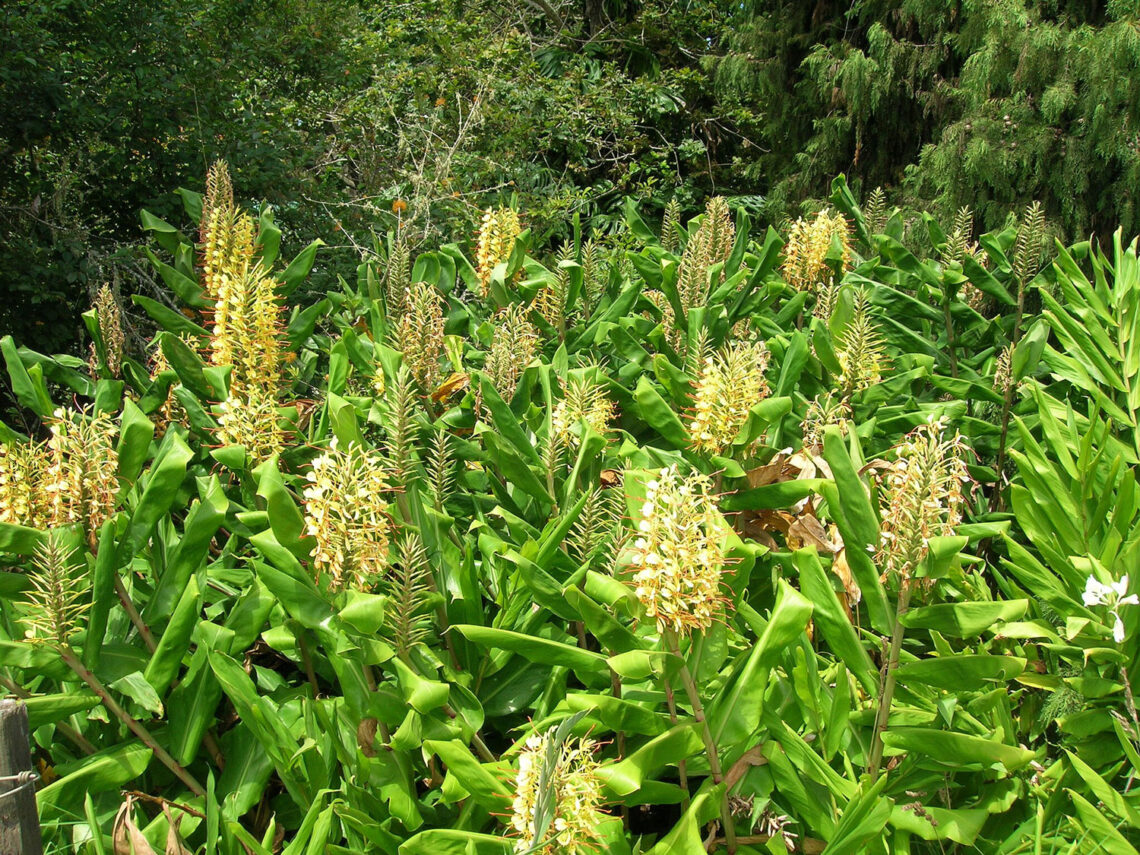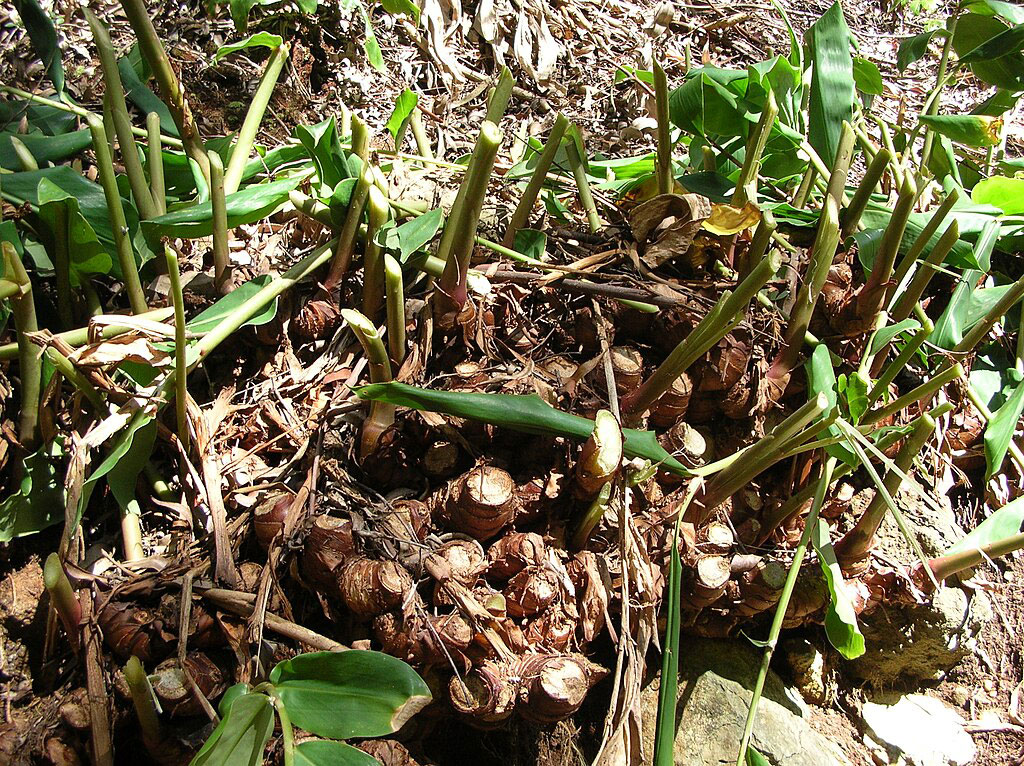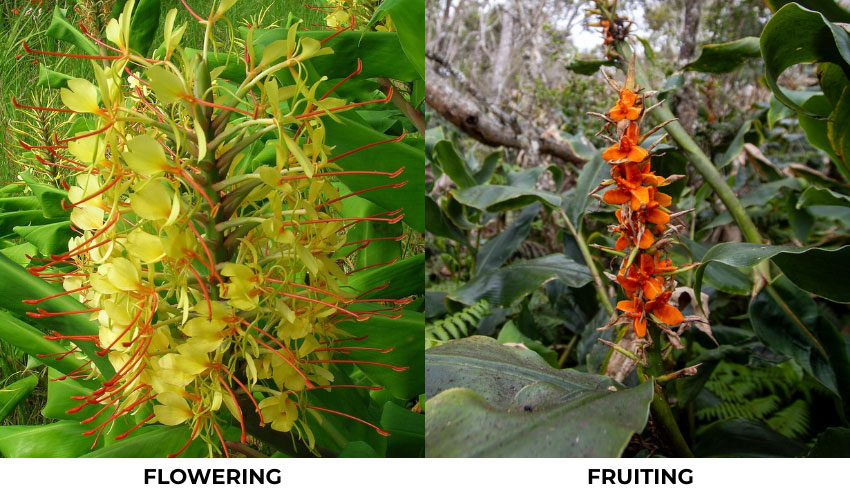
Himalayan Ginger
Hedychium gardnerianum
Report if seen anywhere on Maui

Known from and potential habitat
Species Info General
Hawai‘i is home to many introduced ginger species, but few are as damaging as Himalayan ginger. Himalayan ginger is among the world’s Top 100 Worst Invasive Species. It’s notorious for forming thickets and rhizome mats that dominate forests and outcompete native understory. Native to the eastern Himalayan region, Himalayan ginger is often called ‘kahili ginger’ because its flower stalks resemble a traditional Hawaiian kāhili (feathered staff). However, this plant has no cultural ties to Hawai‘i. ‘Toilet brush ginger’ is another (and perhaps more appropriate) moniker. If left unchecked, Himalayan ginger may permanently alter native Hawaiian ecosystems.
PEST WATCH: Himalayan ginger is not established on Molokai. If this plant is seen anywhere on Molokai, report at 643PEST.org.

Attribution: Forest & Kim Starr, CC BY 3.0


Identification/Description
Himalayan ginger grows to about 6.5 feet tall. It forms dense thickets of large stems and glossy green leaves that dominate the understory of wet and moist forests. In summer, Himalayan ginger produces cylindrical flower spikes with bright yellow flowers and crimson stems. The flowers have a strong, sweet fragrance. After blooming, the spikes produce orange capsules with sticky red seeds inside.
This species is extremely hard to control once it becomes established. Thick roots form mats along the forest floor. Every part of the rhizome must be removed to prevent the plant from growing back. If using herbicide, every part of the root must be treated. Plants on steep slopes and cliffs are inaccessible and impossible to remove until the weight of waterlogged roots causes entire sections to collapse in a landslide.
Impacts
- Thick rhizomes form mats on the forest floor, preventing native plants from growing.
- Grows quickly and shades out native plants.
- Difficult to control once established.
- Produces seeds that birds and mammals easily spread.
On Maui
Himalayan ginger was introduced to Hawai‘i from India in the 1930s for its ornamental value. The first record of escape was in 1940 at Hawai‘i Volcanoes National Park. Today, Himalayan ginger is a pest on all major Hawaiian islands except for Molokai.
This plant is a potential target for biological control in Hawai”i, given its significant impacts and rapid spread. While testing is still in the early stages, promising natural enemies include flies from the genus Merochlorops, weevils from the genus Metaprodictes, and the moth larvae from the genus Artona, among others. If these tests yield positive results, scientists will conduct further testing to ensure there’s no harm to Hawaiian-specific flora and then submit an Environmental Assessment (EA).
Control info/Info on what MISC does about it
- Coming Soon!
Resources/References
- The Latest Biocontrol: Hedychium gardnerianum – HISC
- Hedychium gardnerianum – Plant Pono
- Natural enemies could tame invasive Himalayan ginger – MISC
- Photo Attribution:
- (L) Forest & Kim Starr, CC BY 3.0 <https://creativecommons.org/licenses/by/3.0>, via Wikimedia Commons, (R) MISC
- Forest & Kim Starr, CC BY 3.0 <https://creativecommons.org/licenses/by/3.0>, via Wikimedia Commons
